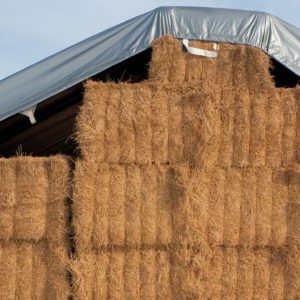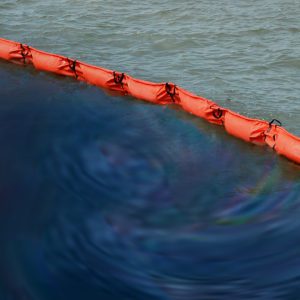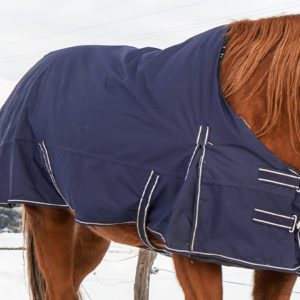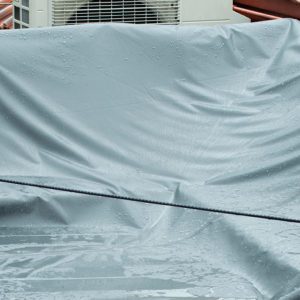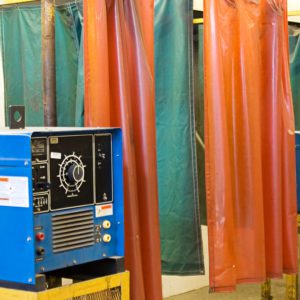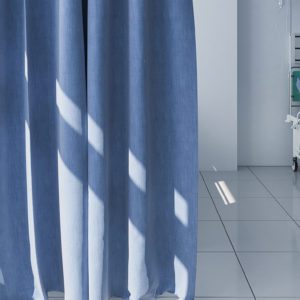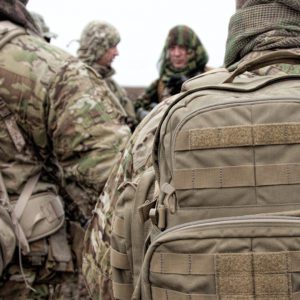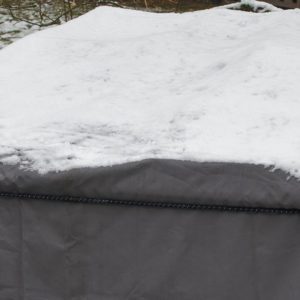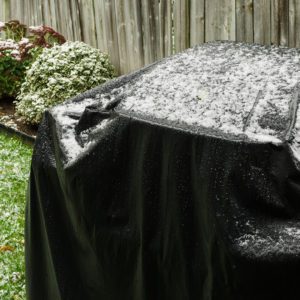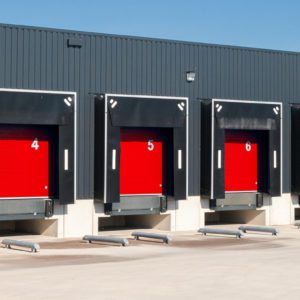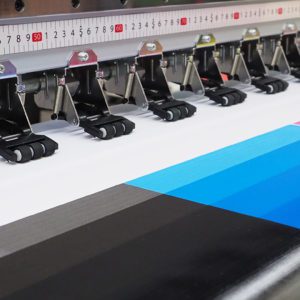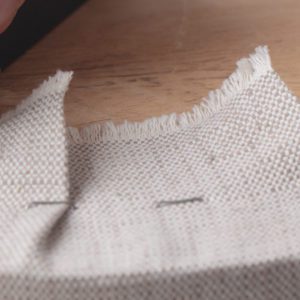What is Vinyl Laminated Polyester?
Vinyl Laminated Polyester (VLP) is a composite fabric made by laminating a layer of vinyl onto a polyester scrim. It offers high durability, water resistance, UV protection, and flexibility, making it ideal for industrial, outdoor, and marine applications. VLP differs from Vinyl Coated Polyester (VCP) in its surface smoothness and flexibility due to the lamination process. Common uses include outdoor signage, tarpaulins, industrial curtains, and marine covers. Popular tests for VLP include tensile strength, tear resistance, and FR tests.
How is Vinyl Laminated Polyester Made?
When producing a laminated polyester fabric, a sheet of unsupported PVC is first formed into a thin layer. At this stage, the PVC has a dough-like consistency and is fed through rollers, like how pasta dough is flattened in a pasta machine. These PVC sheets are then bonded to both sides of the polyester scrim using heat and adhesive.
Typically, one side of the fabric has a thicker layer of PVC than the other. For example, a 60/40 distribution is common, where more PVC is applied to the outer side (like in a tent) to better resist environmental elements, while the inside has a thinner coating. In some cases, the PVC is applied evenly on both sides, such as for block-out fabrics or when ease of cleaning on both sides is important. Because VLP relies on an adhesive bond rather than a mechanical one, it tends to delaminate more quickly when exposed to harsh weather compared to vinyl coated polyester (VCP), which has a stronger bond between the layers.
Key Components of Vinyl Laminated Polyester
Polyester Scrim: The scrim is the woven base fabric made from polyester fibers, providing structural strength. The scrim’s construction (count/weave) determines the fabric’s mechanical properties like tear strength and flexibility.
Vinyl Layer: Instead of a coating, VLP uses thin sheets or films of PVC (vinyl) that are laminated onto both sides of the scrim. This lamination process involves bonding the vinyl to the polyester scrim using heat and pressure, creating a composite fabric. The vinyl layers provide waterproofing, UV protection, and additional strength to the fabric.
Common Testing Methods for Vinyl Laminated Polyester
The 6 common testing methods for vinyl laminated polyester are tensile strength test, tear resistance test, hydrostatic pressure test, cold crack test, wind whip test, and fire retardancy test. Read on to understand the purpose and methods explained for each test and why it matters.
- Purpose: Measures the maximum force the fabric can endure before breaking.
- Why it matters: Ensures the fabric can withstand stretching or pulling forces, which is crucial for applications like tarpaulins, tents, and banners.
- Test method: A sample of the fabric is pulled apart using a tensile testing machine until it tears, and the force required to tear it is recorded.
Tear Resistance Test
- Purpose: Determines how resistant the fabric is to tearing when subjected to stress.
- Why it matters: This test is important for fabrics exposed to sharp objects or high winds, ensuring the material doesn’t easily tear under pressure.
- Test method: A controlled cut is made in the fabric, and the force needed to further tear it is measured.
- Purpose: Evaluates the fabric’s water resistance by measuring the amount of pressure required to force water through it.
- Why it matters: Essential for determining whether the material is waterproof and suitable for outdoor and marine environments.
- Test method: Water pressure is applied to the fabric, and the point at which water penetrates is recorded.
Cold Crack Test
- Purpose: Assesses the fabric’s ability to resist cracking at low temperatures.
- Why it matters: Ensures that VLP can maintain its flexibility and integrity in cold climates without becoming brittle.
- Test method: The fabric is exposed to freezing temperatures and then bent or flexed to check for cracks or damage.
- Depending on the end use, a vinyl product is typically cold crack tested to -20°F, and could be tested down to -40°F. This means that in -20°F conditions the vinyl would not be adversely affected by the cold.
Wind Whip Test
- Purpose: Tests the fabric’s resistance to abrasion and wear caused by repetitive wind motion.
- Why it matters: Critical for fabrics used in outdoor, windy conditions where the material might flap or move constantly, like banners and tarps.
- Test method: The fabric is exposed to controlled wind conditions to simulate repetitive flapping and evaluate how well it holds up over time.
- Wind whip can usually be prevented by securely fastening down the vinyl.
Fire Retardancy Test
- Purpose: Measures the fabric’s ability to resist catching fire and slowing the spread of flames.
- Why it matters: Important for safety in environments like public spaces or industrial facilities where fire hazards exist.
- Test method: NFPA 701-2 is typically used by exposing the fabric to an open flame or heat source to assess its ignition time and the rate at which the flame spreads.
